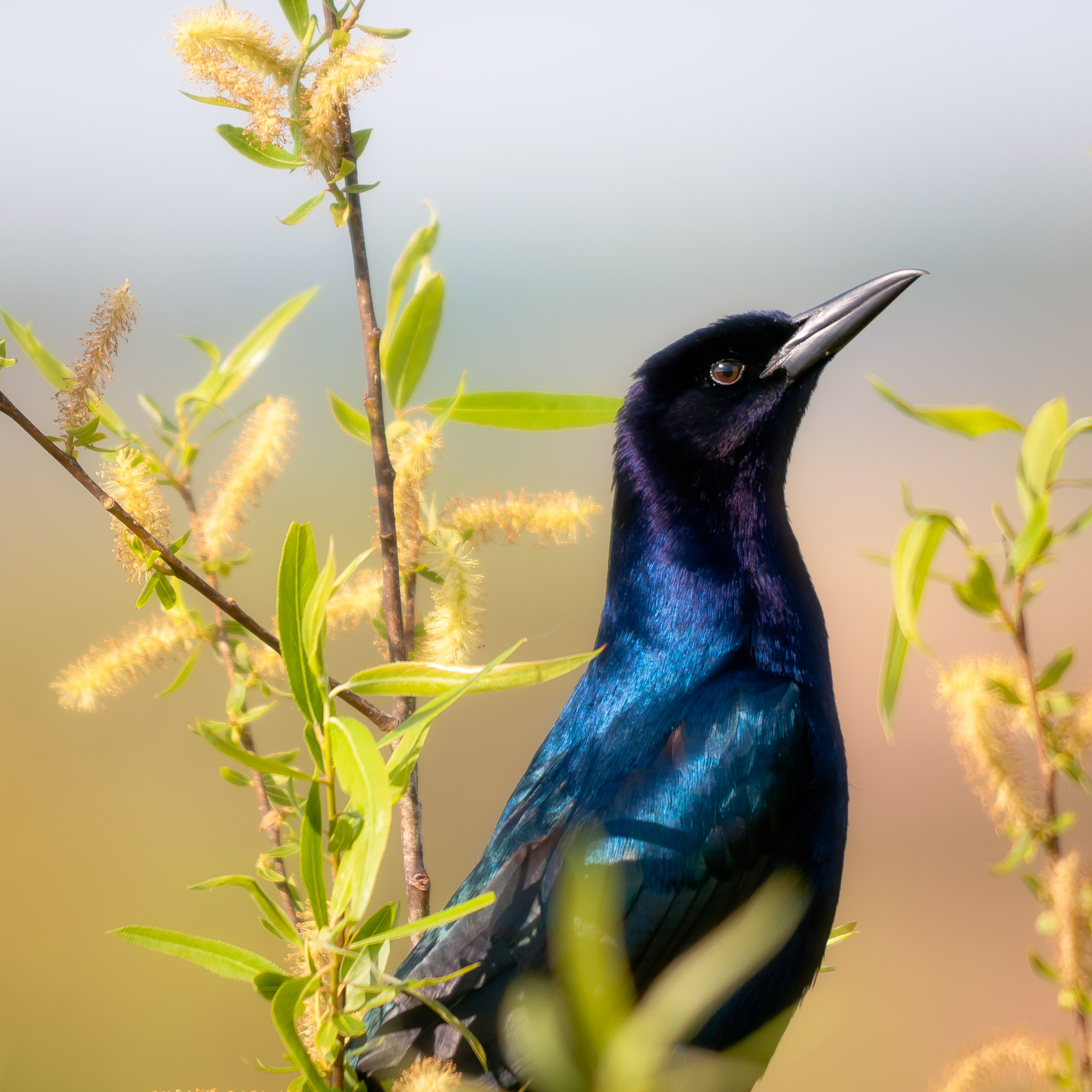An Iridescent Boat-tailed Grackle

The beautiful colors of this boat-tailed grackle are iridescent, changing with viewing angle and lighting conditions. Seen on a dull, cloudy day, a grackle can appear matte black. But viewed in bright sunlight, at just the right angle, this bird shimmers in hues of blue, violet, and teal.
The grackle's flashy plumage is an example of structural coloration — color that arises, not from the absorption of light by pigments, but rather from the interaction between light and nanoscale structures, resulting in diffraction, scattering, and interference.
Many species of birds (including the Common Bronzewing) owe their plumage's appearance to structural coloration. Other examples of this phenomena include the rainbow colors of butterfly wings, mother of pearl, bubbles, and opals.
In the grackle's case, light is reflected from the inner and outer edges of the layer of keratin surrounding the feather's barbules. The thickness of the keratin layer is about the same as a wavelength of visible light, and thus acts as a thin-film reflector. Reddish light undergoes destructive interference, and is diminished, while bluish light undergoes constructive interference, and is reflected relatively unchanged.
Any light not reflected by the keratin layer is absorbed by the underlying layer of melanin pigment. So pigment does play a part in the grackle's appearance, but only by providing a dark background against which the blue light can be seen. An albino grackle appears white — the blue light is still generated, but is overwhelmed by the brighter white light reflected by other layers of the wing.
Not Just Light
Structures in the nanoscale range exhibit all sorts of unexpected physical effects, and not all of them involve light. Another example is the water-repelling property of tiny bumps and hairs. See my photo of an American lotus leaf to learn more.